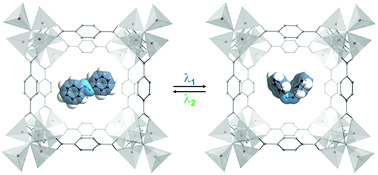Smart nanoporous metal–organic frameworks by embedding photochromic molecules – state of the art and future perspectives
Abstract
Smart, molecularly structured materials with remote-controllable properties and functionalities attract particular attention and may enable advanced applications. In this respect, the embedment of stimuli-responsive molecules, such as azobenzenes, spiropyrans or diarylethenes, in metal–organic frameworks (MOFs) is a very fascinating approach, resulting in easily accessible photoswitchable, nanoporous hybrid materials. It is an attractive alternative to the incorporation of the smart moieties in the MOF scaffold, which usually demands complex synthetic efforts. Here, the opportunities, properties and perspectives of the embedment of photochromic molecules in MOF pores are reviewed. In addition to presenting a straightforward route to prepare smart materials with, e.g., photoswitchable adsorption properties that can be used for remote-controllable membrane separation, the photoswitch@MOF compounds also represent unique model systems to investigate the dye as well as the MOF properties and their interactions with each other. For instance, the MOF pores possess a polarity similar to a solvent, so that the optical properties of the resulting materials may be influenced by a careful choice of the respective host material.

- This article is part of the themed collection: 28th International Conference on Photochemistry (ICP 2017)


 Please wait while we load your content...
Please wait while we load your content...